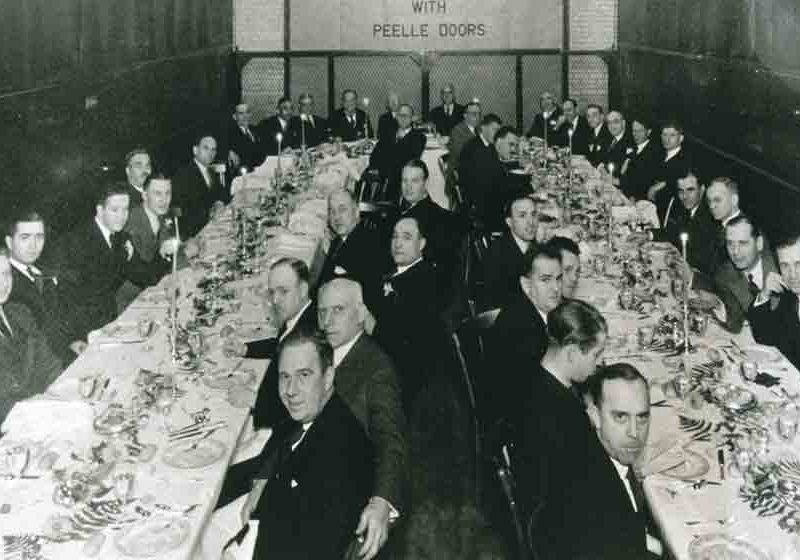CEO and co-owner of Hütter-Aufzüge finds success in a niche market.
Since 1992, Hütter-Aufzüge GmbH has focused on inclined elevators for public transportation, elevated buildings and special architecture worldwide. Achim Hütter, CEO and co-owner, took responsibility for the company in 1989, and his brother, Bernd, joined him in 1999. Today, Hütter-Aufzüge has 70 employees in Hamburg, Glinde and Kiel, all in Germany, selling an estimated 80 elevators and 600 doors, and servicing approximately 2,000 elevators per year.
Hütter lives and works where he has lived all his life, in what he calls “the most beautiful city in the world (when the sun shines),” Hamburg. He says of his lineage, “As sons born into the fourth generation of a 135-year-old elevator dynasty, my brother and I jokingly say that we were born in an elevator shaft.” During school holidays, Hütter’s father took him to the company to inspect elevator installations and supervise elevator testing. When he turned 15, he began spending those holidays in the company’s manufacturing area, assembling elevator landing doors and erecting elevator cars. During his university breaks, Hütter helped install, modernize, repair and maintain elevators. His father died when he turned 24, and though Hütter hadn’t finished his MBA from the University of Hamburg, he started working part time at Hütter-Aufzüge.
Upon graduating from his master’s program, Hütter assumed greater responsibility at the company very quickly. “I finished my last exam for my MBA on March 1, 1989, at noon. At 1:00 p.m., I started as the CEO of Hütter-Aufzüge,” he recalls. Coming directly from the university with no experience of how to run a company was only one of the new leader’s challenges. He also dealt with high employee expectations as they awaited necessary changes he wasn’t sure how to make. As the company was not in the best financial shape due to the long illness of Hütter’s father, conversations with bankers who had no confidence in his ability to turn things around were tense.
Still, with time, Hütter was able to right the ship; after three years of working 80-plus-hr. weeks in efforts to compensate for his lack of experience, Hütter stabilized the company. Somehow during this time, he realized running a family business could be fun, especially as he was able to reduce his workload and look toward the greater industry. He was soon elected to the board of VFA-Interlift (1992). Three years later, he became vice-chairman of the organization, and in 1998, he became chairman, an office he still holds, now on his fifth three-year term.
Hütter humbly realizes, though, that his success would have been stunted without great mentors. To this end, he credits fellow VFA board members Wolfgang Schäfer of Schäfer Fixtures and Dietfried Kollmorgen of Kollmorgen Controls. He says Kollmorgen taught him to stand up and defend his opinions yet always remain calm. Another of his most important mentors was Horst Wittur, former CEO of the Wittur Group, whom he met in late 1989 and describes as “a visionary with an incredible persistence to achieve his goals.” Lessons learned and attributes from these mentors serve Hütter well when making decisions for Hütter-Aufzüge.
Hütter states that his biggest challenge running Hütter-Aufzüge today is finding the right personnel for each job and motivating employees to bring all their energy every day. He achieves this by integrating key people in decision making and offering high levels of responsibility in all positions. By working together, company members share in what Hütter calls the most rewarding aspects in his work – winning contracts and finishing jobs.
Speaking of admirable projects, Hütter says he has the greatest respect for the masterful engineering of the elevators in Paris’ Eiffel Tower. He feels it serves as an example of the fact that without elevators, the world would look very different. After seeing drawings of alternatives to the current vertical transportation in the tower, without thorough engineering and taking a risk, the landmark as we know it would have never been realized.
While he does not feel it is a good time to enter the elevator industry, Hütter plans to continue leading Hütter-Aufzüge toward development into niche markets, both locally and globally. He predicts the demand of elevators growing due to urbanization and an aging society. However, much of this demand has shifted to Asia (especially China) and South America. He sees this as a continuing trend, as Europe, and North America and other developed countries will face growing competition. Growing markets will also offer opportunities. Hütter suggests small and medium-sized companies focus on their strengths and gain expertise in niche markets. He advises to not miss major trade shows such as Interlift and those covering regions in which a company wants to do business.
Along with his work with VFA, Hütter is very active in many areas of the industry. Hütter has been a member of the board of the employer’s association of metal and electric enterprises in Northern Germany since 1999 and is a founding board member of the association’s trust, founded in January 2004. He was elected to the board of the European Lift Association in 1999 and remains in the position. He has been a member of the Elevator World, Inc. board of directors since 2005.
Hütter lives with his wife, Nicole, and their 17-year-old son and 14-year-old daughter. Though Hütter has little free time, he still splits it into multiple activities, including traveling, boxing, tennis, yoga, running, motor biking and movie going. He is also in the midst of a long-term process of learning Spanish. Though he intends to continue in his current capacity a while longer, if he does “retire,” Hütter wants to remain busy traveling, visiting friends and working as a consultant.
A Brief History of Hütter-Aufzüge
Achim Hütter’s great-grandfather founded the company H. Hütter Jr. in April 1876. His first products were winches operated by gas, steam or hand for the newly erected warehouse complex at the harbor of Hamburg, Germany. Apart from winches, he also provided gas fittings and a range of pumps. In 1882, he was one of the few local engineers with the knowhow necessary to erect the newly invented combustion engines – still fuelled by gasoline – that powered the first municipal electric street lamps in Hamburg. In 1886, he produced his first passenger lift. After World War I, his sons, Heinrich (1886-1955) and Adolf (1888-1951), continued the business.
Hütter began exporting its products early; for example, passenger lifts went to Japan, and cranes were sent to the Netherlands. Paternoster lifts (popular in Germany until the 1960s), goods lifts, winches, shunting systems and cranes were built. Inflation and the 1930s market crash did not leave the business untouched, but it soon rallied, and the size of the workforce peaked at approximately 110 employees.
During World War II, bombs completely destroyed the company’s premises. Even so, Heinrich took up production again in the same year, working from a makeshift building with a leaking cardboard roof. In 1951, Achim’s father, Heinz (1922-1987), supported his own father in his endeavor to catch up with prewar performance. The existing site soon became too small for the growing company; it moved from the center of Hamburg to the nearby Glinde, Germany, industrial center.
Get more of Elevator World. Sign up for our free e-newsletter.








